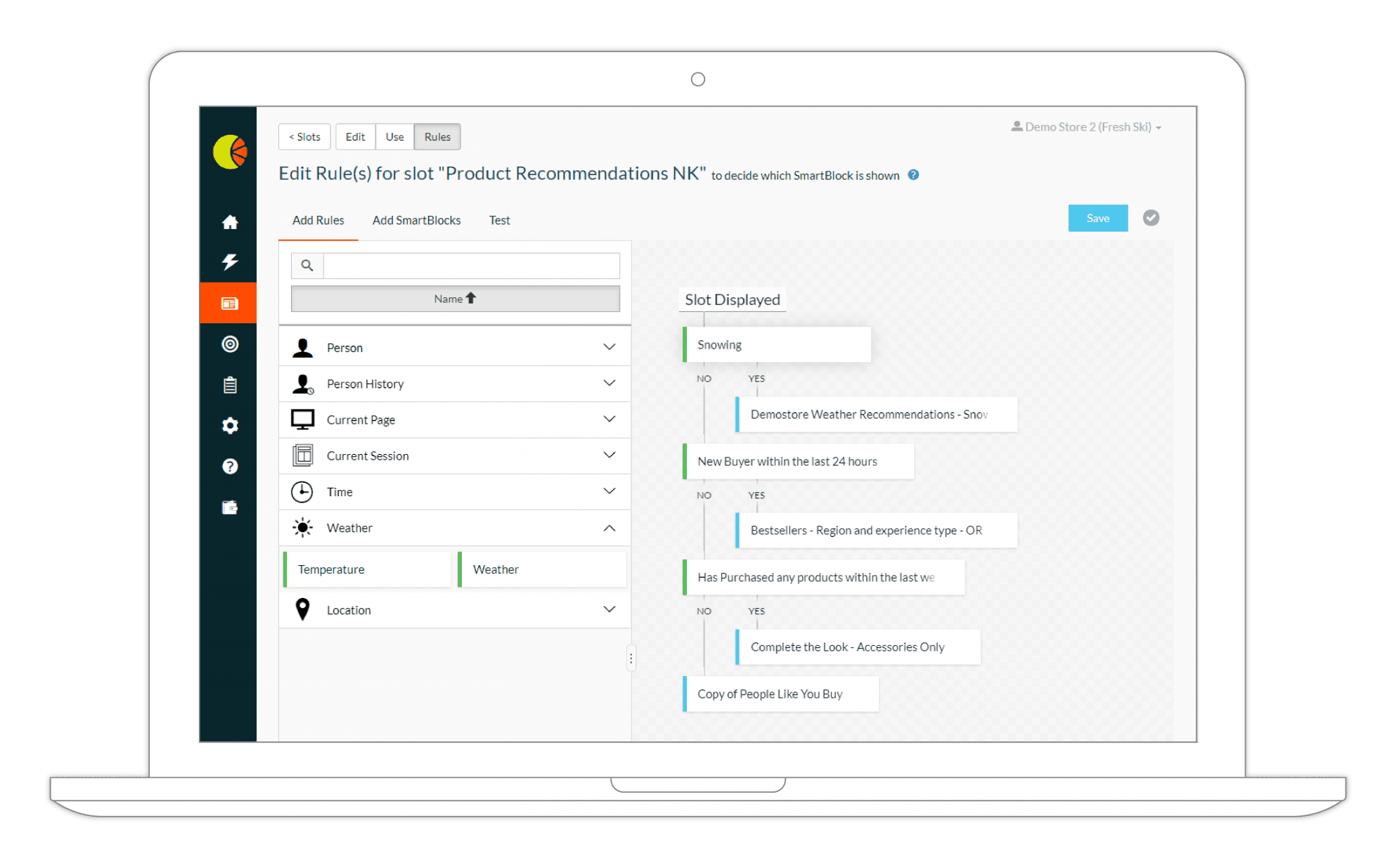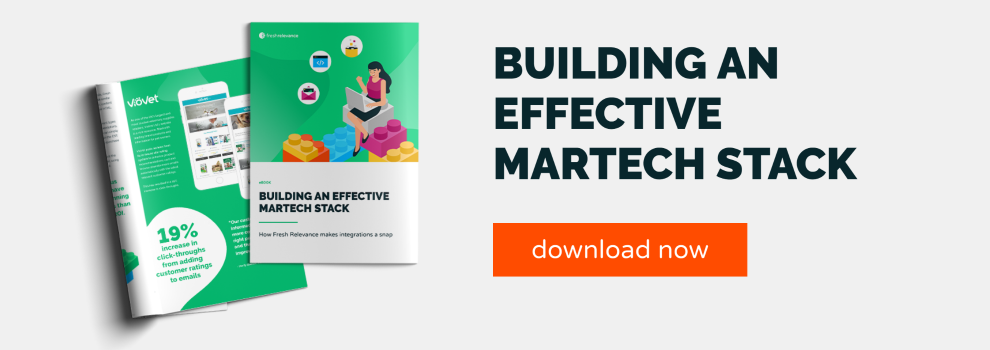Want to enhance the customer experience for visitors to your eCommerce store with personalization? You’re not alone. According to a Forbes Insights survey, 57% of marketing leaders say they want to advance personalization this year.
Many eCommerce platform vendors promise personalization, either as part of their product or as an add-on, but eCommerce marketers realize that one technology is rarely the best choice for all parts of the ecosystem. The shift to headless commerce and recognition of the limitations of all-in-one solutions has led eCommerce marketers to look for best-of-breed tools that add specialized functionality to their existing martech stack.
So when looking to ramp up the level of personalization on your eCommerce site, don’t settle for the clunky browse-based product recommendations included with your eCommerce platform. Instead, opt for a personalization platform like Fresh Relevance that integrates seamlessly with your marketing stack to give you more functionality and drive quick ROI.
Read on to learn how Fresh Relevance integrates with eCommerce platforms such as Magento and Shopify Plus, as well as mobile apps and headless PWAs, enabling eCommerce businesses to add sophisticated personalization tactics to their marketing.
How Fresh Relevance integrates with eCommerce sites
Fresh Relevance has pre-built integrations for Magento and Shopify Plus. To implement, all our clients need to do is add the Fresh Relevance script to their website with simplified off-the-shelf integration.
Using another eCommerce platform?
The Fresh Relevance script can be easily added to other eCommerce sites in a number of ways, including via a tag manager such as Google Tag Manager, Tealium Tag Manager or Adobe Tag Manager.
What does the script do?
The script allows marketers to add our tracking code to their website to collect data and then use this data to personalize the onsite experience.
Using JavaScript, the script collects data on visitors around what they browse, cart, abandon and buy and sends it to Fresh Relevance to help build a database. It can also scrape product data, such as images, descriptions, category information, stock levels and prices, to be used to personalize the customer experience further. This eliminates the need for any kind of backend integration. Instead the script sits in the front-end, collecting information in real-time as people interact with the website.
Marketers control what they want to do with that information, using content slots, dynamic content blocks called SmartBlocks, and marketing rules.
A slot is a placeholder on the website to display personalized real-time content to each shopper. This could be personalized product recommendations, dynamic banners, timely popovers and more based on what a person has browsed, carted and purchased. Or the slot can serve content to increase conversions through FOMO, such as countdown timers or user-generated content, like product ratings and Instagram photos.
Marketers control what content is shown to each website visitor through the marketing rules that they set in the Fresh Relevance UI.
These tactics are proven to boost results. In fact, the average Fresh Relevance client doing web personalization sees a sales uplift of 8%.

What our clients say
“By working with Fresh Relevance we are able to build levels of functionality into our eCommerce operations that we simply do not have the time or resources to build ourselves.” Emma Haskell, Head of Customer Retention at Vision Direct
How Fresh Relevance integrates with mobile apps & headless PWAs
Fresh Relevance’s mobile API allows your mobile apps, progressive web apps and other systems to pass data to Fresh Relevance and personalize your apps using headless architecture.
How does it work?
Data capture for mobile apps is very similar to the website. The app needs to make an HTTP POST for each product or page that is viewed. Then, to personalize the mobile app or progressive web app by using headless PWA technology, slots are placed in the app and the marketer uses marketing rules to define what dynamic content to display in these slots to each shopper.
The mobile app can make an HTTP GET request to the Fresh Relevance server and retrieve back either JSON or HTML representing the slot. This is then rendered into the mobile app.
Customer support
Support comes included with all Fresh Relevance packages, so we’ll be on hand to help deploy the script if you require assistance.
What our clients say
“Fresh Relevance is one of the easiest tools we work with, and the customer support is exceptional. With other tools, you often get great sales and account management, but when you have a technical question you have to wait a week for a solution. With Fresh Relevance, any technical questions are usually resolved within a couple of hours.” Gary Ingram, Managing Director at The Diamond Store.
Download our guide to building an effective martech stack to find out more.







